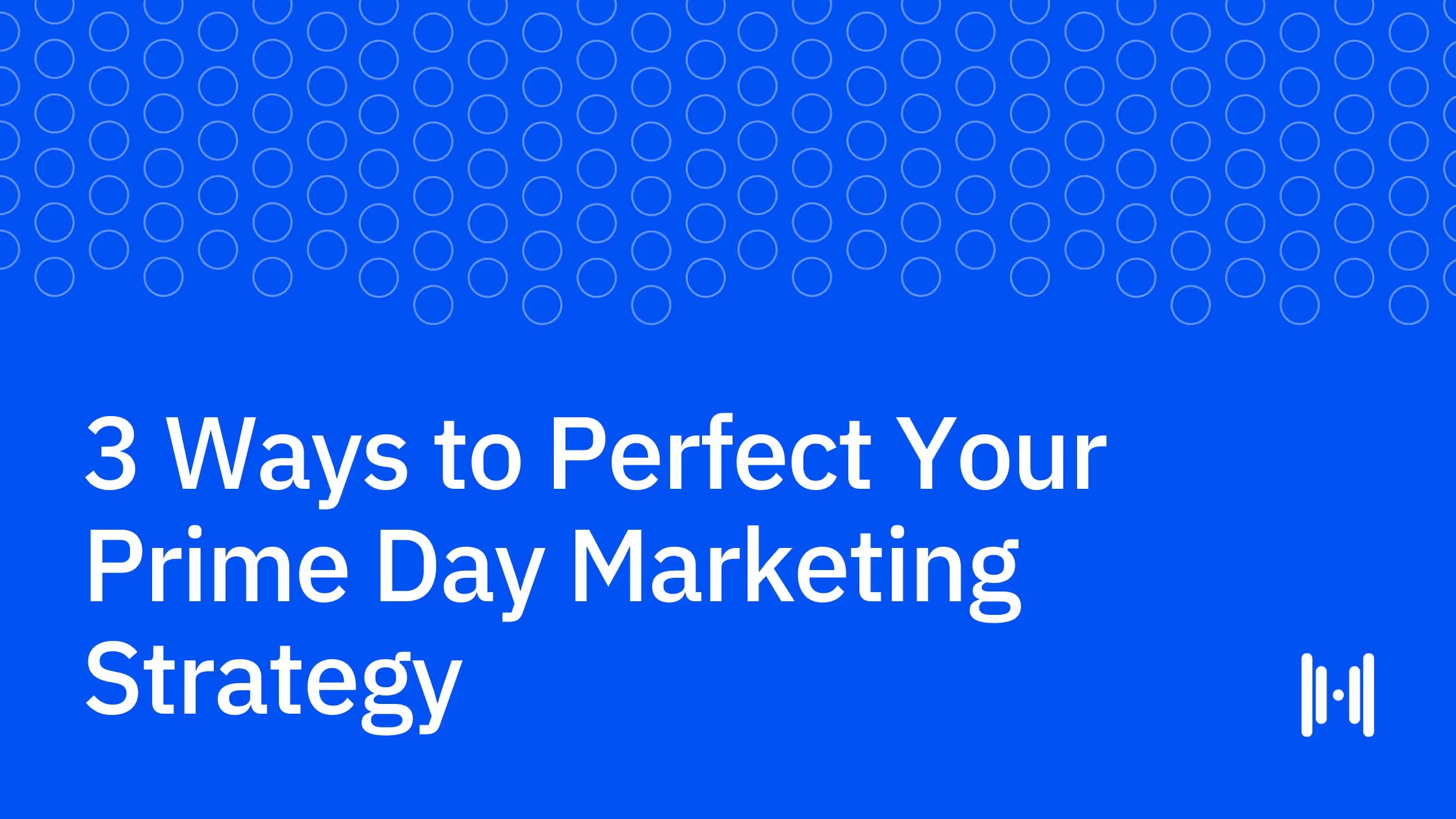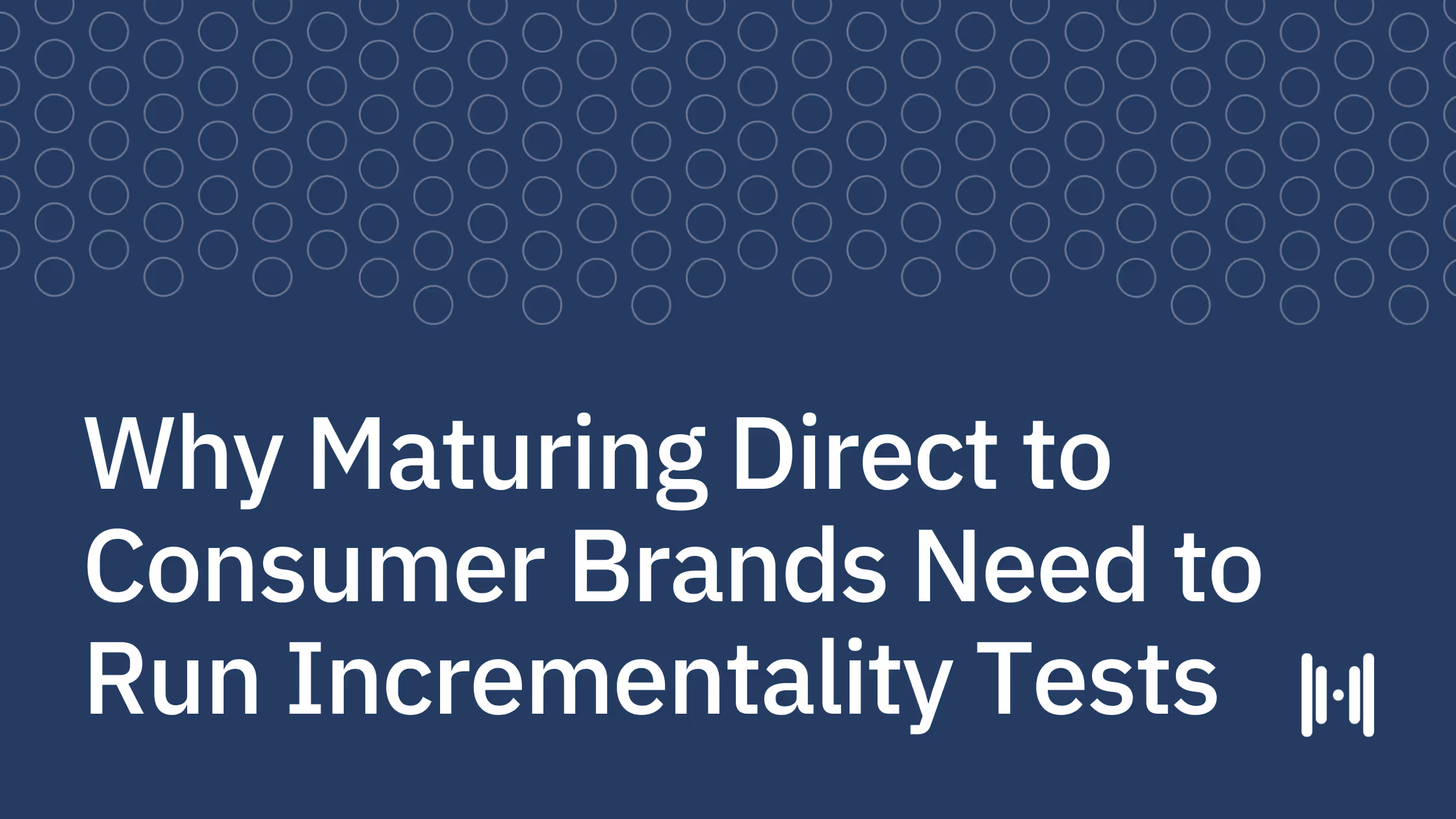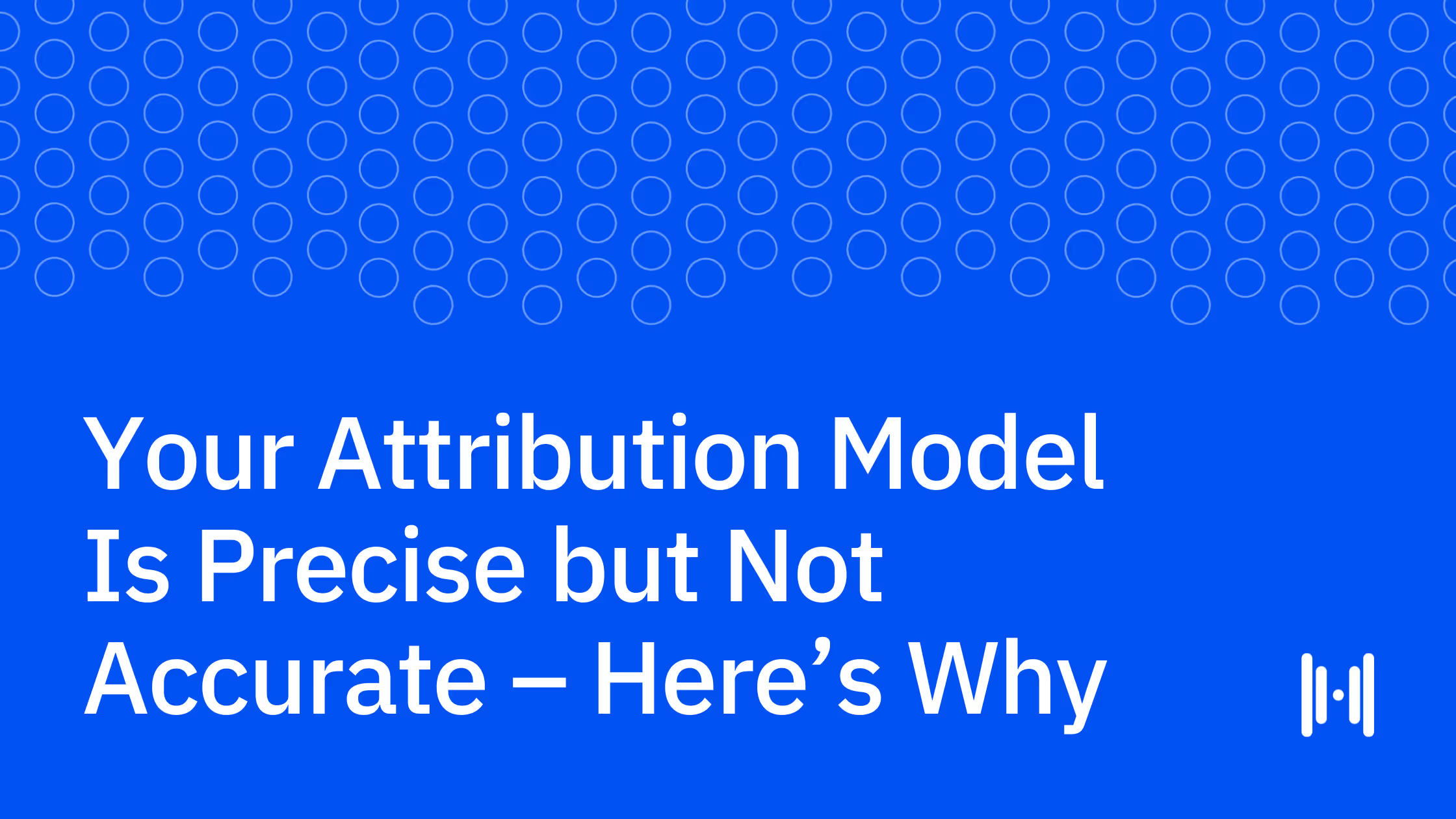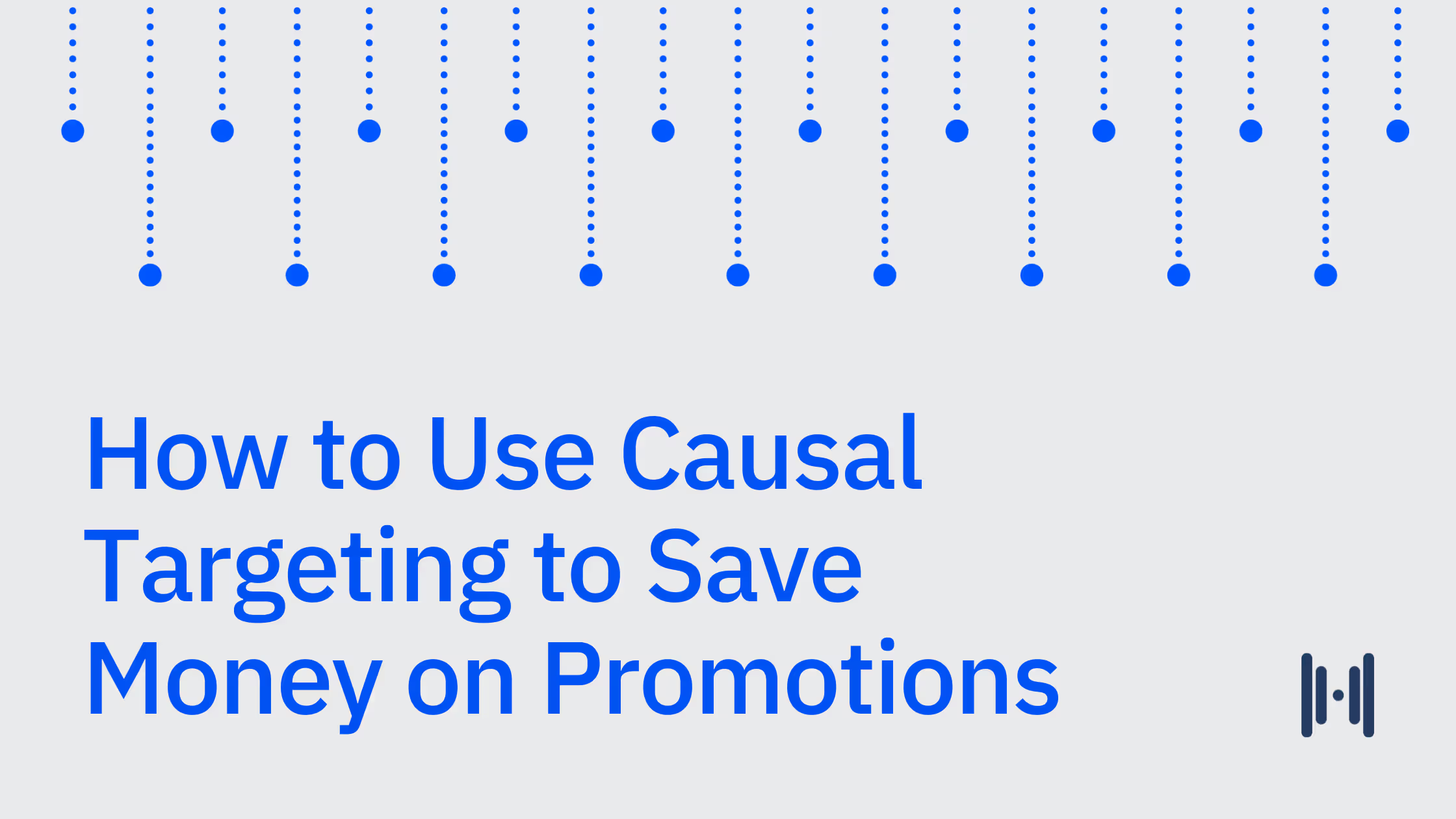
In our recent industry survey, we were able to put numbers behind a long-standing gut feeling: Marketers don’t trust their traditional media mix models (MMMs). In fact, respondents said MMMs were one of their least trustworthy tools in their measurement stack. (Not for nothing, incrementality earned the top spot when it came to trust.)
The root of this media mix mistrust is simple: Traditional MMMs rely on past correlations rather than true causal relationships. Because traditional MMMs focus on correlation over causation, their accuracy drops when applied to real-world, evolving conditions.
TL;DR:
- MMM measures marketing channels’ impact on business outcomes.
- Traditional MMMs rely on correlation, not causation.
- Causal MMM treats experiments as ground truth.
- Building your own MMM is complex, resource-heavy, and rarely cost-effective.
- Open-source MMMs lack support and experiment integration.
- When scoping potential MMM software providers, there are five key questions to ask.
What is marketing mix modeling?
A Marketing Mix Model (MMM) is a statistical approach that measures how marketing activities drive business outcomes like sales or revenue. It uses historical data to estimate the ROI of each marketing channel (e.g. TV, search, social media, etc.).
By quantifying these effects, MMM helps marketers understand which channels perform best. This enables data-driven decisions and forecasts, rather than relying on intuition. MMM’s main limitation is that it relies on historical data, so it can struggle to capture rapid market changes or the impact of new, untested channels.
Five questions to ask a potential MMM software provider
Anecdotally, we hear from teams whose multiple models are all saying different things. One model might say that TV is driving the most business, while another says Meta is the best. How do you know what to believe?
Measurement providers are aware of this growing mistrust, so they’re papering over the problem by claiming their MMMs are “calibrated with incrementality tests” or “pair traditional MMM with experiments.” Unfortunately, this won’t cut it either.
“Think of traditional MMM as a leaky boat,” says Haus’ Solutions Engineering Lead (and analogy extraordinaire) Tyler Horner. “Adding incrementality tests is like patching up the holes with duct tape. It’ll keep you from sinking right away, but you’ll still be taking on water.”
We aren’t nautical experts, but that sounds bad. That’s why you need an MMM inherently powered and tuned by causality, not just tacked on after the fact. So with this key nuance in mind, here are five important questions to consider as you compare different MMMs.
Related reading
1. Is it built on a foundation of high-quality experiments?
“Unless you have really stable data over time, you should look for an MMM that automatically syncs with incrementality experiments,” says Measurement Strategy Lead Chandler Dutton. “That’s the best way to avoid the effects of multicollinearity and really get a clean read on what your marketing is doing.”
For instance, say your business is having a record-setting quarter. Data is unstable — sales are spiking! You try to understand why sales are spiking in order to add fuel to the fire. You know you increased ad spend last quarter — but is it that increased CTV ad spend that’s causing the rise? Or your increased investment in Meta campaigns? A traditional MMM might give you two conflicting answers — leaving you unable to capitalize on this sudden growth.
2. Do model recommendations line up with results from experiments?
Every brand is different. For example, maybe your experiment results show no lift for Google Brand Search. Despite this, some MMMs will continue to recommend spending millions in this channel. But when experimental data is ground truth for your MMM, these inconsistencies won’t arise — and your marketing team won’t have to play detective trying to uncover the true, correct recommendation.
3. Are the recommendations actionable?
In order to take action on your MMM’s recommendations, you and your model need to be on the same page. That’s why you should look for an MMM with customizable channel definitions, which makes it easier to align your model with the unique ways your business allocates budget and makes decisions.
For instance, say you know you can’t spend more on direct mail because your team needs a few months to print out new catalogs or postcards. Without customizing to account for this detail, your MMM might blindly recommend more direct mail spend. What use is a model that recommends an action that is fundamentally unactionable?
4. Can it handle your business goals?
No two businesses are the same — some brands may be nudged by the executive team to focus on profitability. Others, in an effort to drive brand growth, might be looking to “pour gasoline on the fire” and maximize revenue. Meanwhile, some are looking for a happy medium between growth and efficiency.
You want an MMM that understands this. This means the model doesn’t just give you generic recommendations but rather recommendations that help you best optimize for contribution margin or profitability.
5. How quickly can it onboard my data?
An inefficient data onboarding process can delay project timelines, slow time-to-insight, fail to keep up with changing market conditions, and frustrate stakeholders (i.e. lots of “friendly check-ins” from an impatient boss).
No, onboarding potentially years of complex datasets isn’t something you can knock out in an afternoon. But try to locate that sweet spot between efficiency and thoroughness. When in doubt, ask the provider for documentation that explains their onboarding process. If they aren’t transparent, that’s a red flag.
Traditional MMM has inherent limitations
At the risk of repeating ourselves: Traditional MMMs are flawed because they rely on correlational data, which is harder to trust. Why? Because correlation data doesn't explain which marketing activities are actually driving business outcomes. It only illustrates historical data. Relying on historical data makes it really hard to tease out what a good coefficient value is because in practice, spend increases and decreases are typically happening across channels at the same time.
Related reading:
- Your Attribution Model Is Precise but Not Accurate - Here’s Why
- Marketing Measurement: What to Measure and Why
Beware of traditional MMM masquerading as a causality-driven MMM
As you browse MMMs, be on the lookout for coded language like “test-calibrated” and “reinforced with experiments” — and avoid providers who downplay rigor or say experimentation is a commodity. That could mean you’re dealing with a traditional MMM masquerading as a causality-driven MMM. Traditional MMMs will use experiments as suggestions, but you want an MMM that treats experiments as ground truth.
This is on top of the fact that traditional MMMs are already expensive, resource-intensive, and tend to lack transparency into their mathematical methods. That means you aren’t just acting on flawed data. You’re also sinking time and money into a software solution that might not pay dividends.
So, should you just build your own MMM?
“What if I just build my own?” you ask. “I won’t be locked in with some vendor who charges me thousands of dollars, plus I’ll have all the transparency I need because I’ll be building it.”
This ignores an unshakeable reality: You’ll have to hire people to stand up and maintain the MMM. These folks will have to wrangle years of data. And wrangling is only half the battle — they’ll also have to ensure the data is consistent, complete, and accurate. Conservatively, your MMM team might require 8 to 10 specialists spanning data science, engineering, and product management.
The costs are one thing — but assembling this team will also take months. Add in a year or two of iterating to optimize testing practices and processes, and you might miss the boat (...if it isn’t already sinking from all those taped-over holes where the experimental data should be).
In a competitive business environment where investors and shareholders have high expectations for profitability, you can’t spend two years getting your MMM right. You need a solution that can quickly surface actionable recommendations.
Related reading:
What about open-source MMMs?
On the surface, open-source models like Meta’s Robyn or Google’s Meridian make it easier for resource-strapped teams to get up and running with MMMs. They come with the obvious benefit of transparency because you can see the code used to build it. Plus, data scientists from around the world can make contributions to the codebase, improving the model over time.
But again, these options come with limitations — most notably, difficulty incorporating experimental results, slow onboarding, and limited model validation. And when you rely on an open-source solution, you also miss out on a key benefit of working with a provider: support. Having a customer success partner is the bare minimum — ideally, you’ll work alongside a Measurement Strategist who can dig into the nitty gritty of your marketing and help you unlock growth opportunities.
How does Causal MMM differ from traditional MMMs?
Causal MMM, coming later in 2025, is powered by causal experiments. While traditional MMMs use experiments as suggestions, Haus’ Causal MMM treats them as ground truth. Our proprietary algorithms go beyond standard Bayesian methods to ensure that your model always aligns with experiments, leading to better accuracy.
And we have a key advantage in this regard: We’ve been leading the way on experiments for a while now. GeoLift, our best-in-class geo-experimentation platform, ensures that your experimental results are the most precise and reliable estimates of causal impact, setting us apart from competitors.
Causal MMM vs. traditional MMM software
Haus’ Causal MMM has a few other advantages that help it avoid the pitfalls of traditional MMMs:
- Model and Experiment Consistency: Because Causal MMM is fundamentally powered by experiments, you won’t need to worry about your experiment results saying one thing and your model recommending something entirely different.
- Seamless Integration: While others require manual updates for experiment calibration, Haus Causal MMM automatically integrates new experiments from the Haus ecosystem, keeping your model up to date.
- Customizability: cMMM allows you to customize each of your channels according to the unique way you think about each platform. For instance, maybe you use Meta for bottom-of-funnel and top-of-funnel, or maybe ASC and non-ASC. cMMM will enable you to see how channels specific to your business are performing.
Causal MMM pilot partners tell us the Causal MMM beta outperforms traditional models on consistency, speed, and user experience. That’s because incrementality tests aren’t just duct-taped on after the fact. Causality is there at the core — helping you confidently navigate the choppy waters of modern digital marketing.
Related reading:
MMM software: FAQs
What’s the fundamental difference between Causal MMM vs. traditional MMM?
Causal MMM is inherently powered and tuned by causality from experimental data. Traditional MMMs rely on correlation from historical data — and while they might “reinforce their models with experiments,” this is still fundamentally different from an MMM where experimental data is ground truth.
What advantages does Causal MMM have over traditional MMMs?
There are three key advantages of Haus’ Causal MMM over traditional MMMs.
- First, with experiments at the core, you don’t have to worry about inconsistency between experiment results and model recommendations.
- Second, automatic integration of new experiments from the Haus ecosystem ensures Causal MMM stays up to date.
- Finally, Causal MMM enables you to customize your channels to fit your business’s unique needs and processes.
How do I know if an MMM provider is offering true causal analysis?
True causal MMM treats experiments as ground truth rather than suggestions, automatically syncs with incrementality experiments, and ensures recommendations line up with experimental results.
Beware of coded language like "test-calibrated" or "reinforced with experiments." These may indicate a traditional MMM masquerading as a causal one.
To get a clear understanding of a provider’s MMM methodology, you’ll need to know how they incorporate experimental data. You’ll also need to know whether their model recommendations consistently align with experiment results.
What are the key questions to ask when selecting an MMM provider?
Here are the five questions we recommend:
- Is their MMM built on high-quality experiments as a foundation?
- Do their model recommendations align consistently with experiment results?
- Are their recommendations actionable?
- Can the MMM handle your specific business goals?
- How quickly can they onboard your data?
If I’m looking to save money, should I just build my own MMM?
From a cost-savings perspective, building your own MMM isn’t the solution. After all, you’ll need to hire a team that can build and manage the MMM (whereas working with the right vendor can help you go much faster). You’ll also have to factor in the potential losses that will come from months — if not years — of assembling this team and optimizing the model. Plus, you lose out on the subject matter expertise of working with a team dedicated to building and maintaining MMMs.
What are the advantages and disadvantages of open-source MMMs?
Open-source MMMs like Meridian and Robyn have the advantage of transparency and gradual code improvement from a community of contributing data scientists. But there’s a catch: You’ll still need an internal team that can integrate your business’s data and processes with this open-source MMM. Plus, you don’t have access to any sort of subject matter experts who can build experiment roadmaps, surface useful insights, and support growth.
.avif)
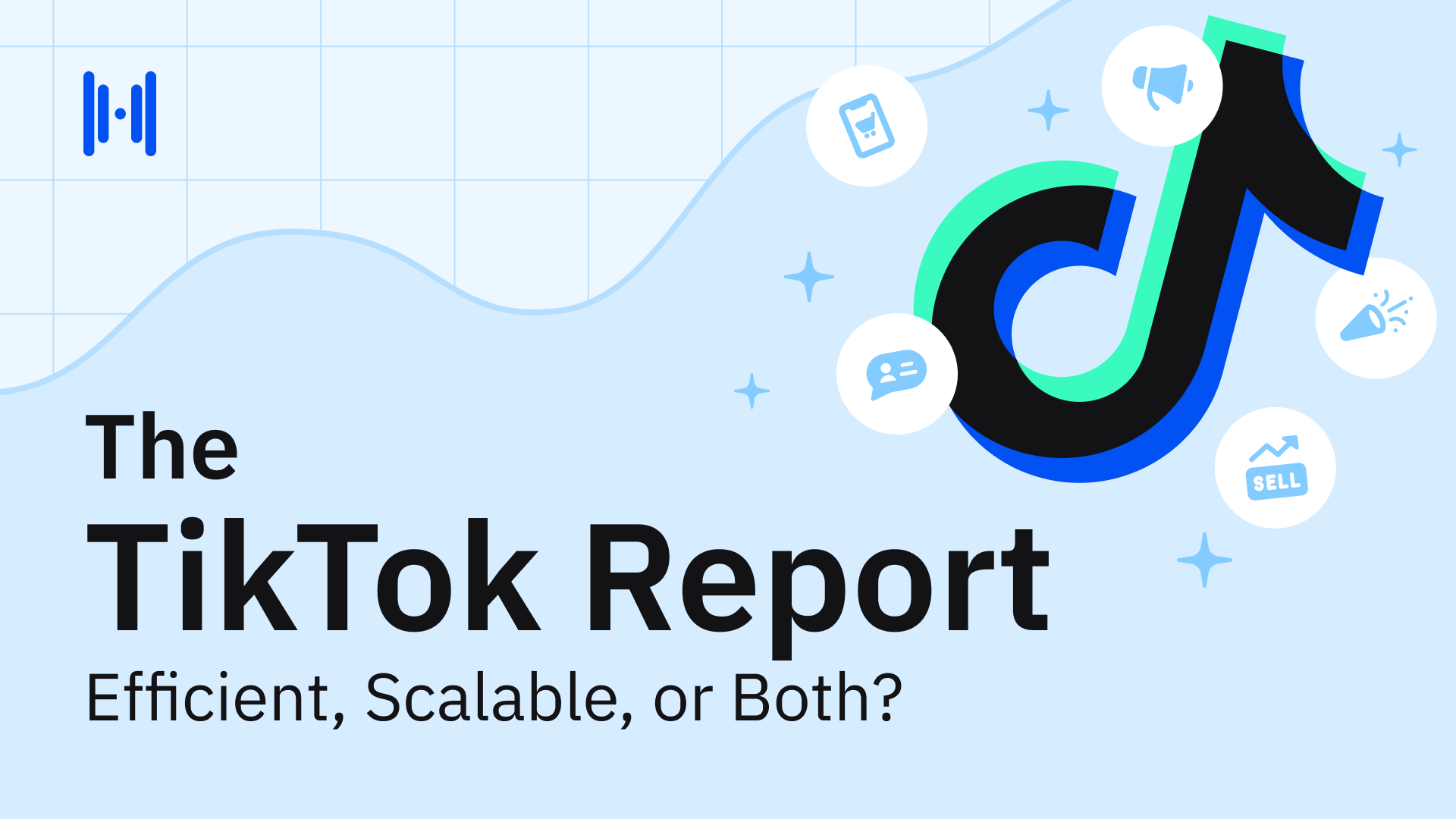

.png)
.png)
.png)
.png)
.png)
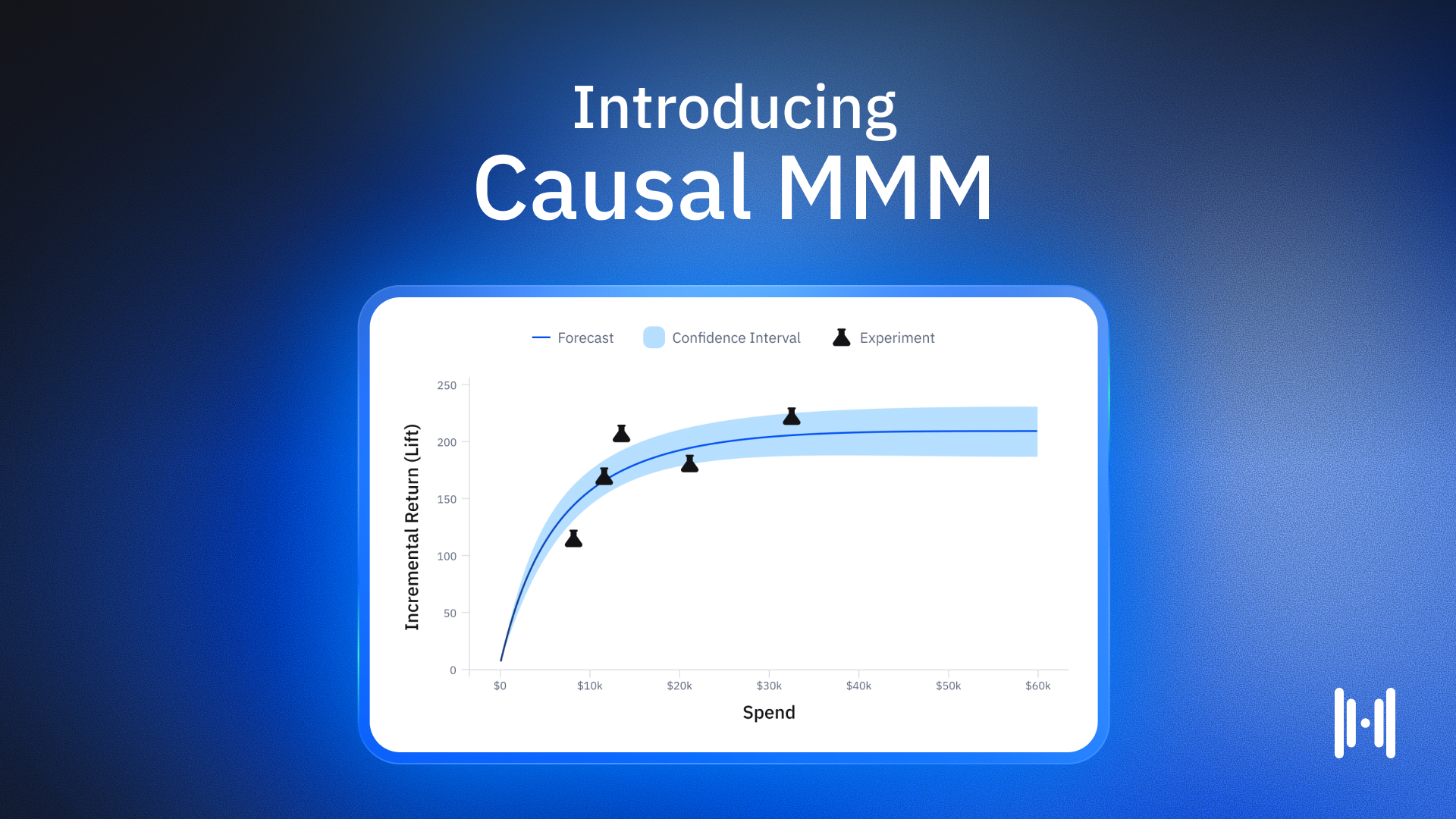
.avif)
.png)
.png)
.png)
.png)
.png)
.png)
.png)
.png)
.png)
.webp)
.webp)
.webp)
.webp)
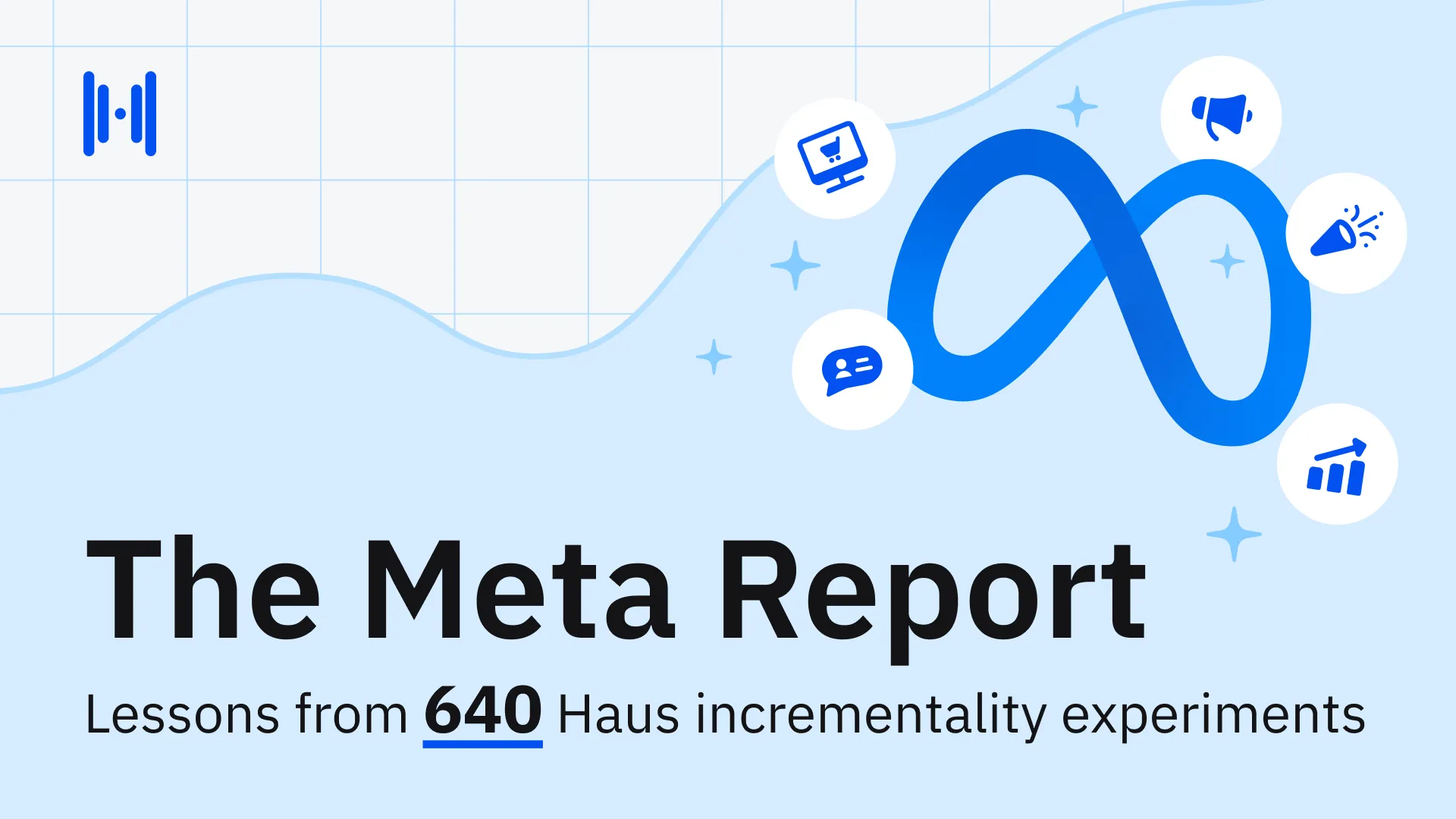
.webp)

.webp)
.webp)
.webp)
.webp)
.webp)
.webp)
.webp)
.webp)
.webp)
.webp)

.webp)
.webp)
.webp)
.webp)
.webp)

.webp)
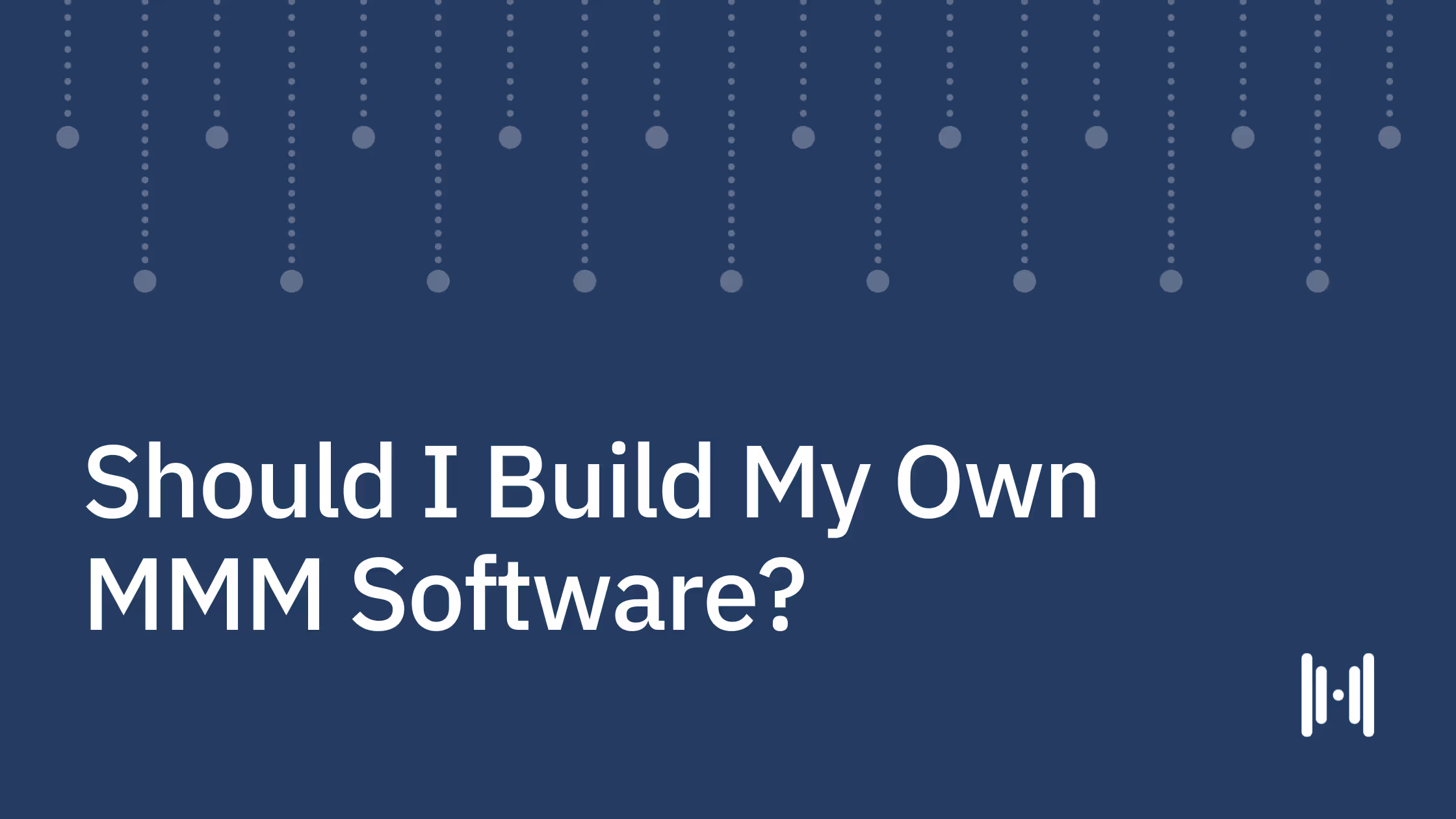

.avif)
.avif)



.avif)
.avif)
.avif)

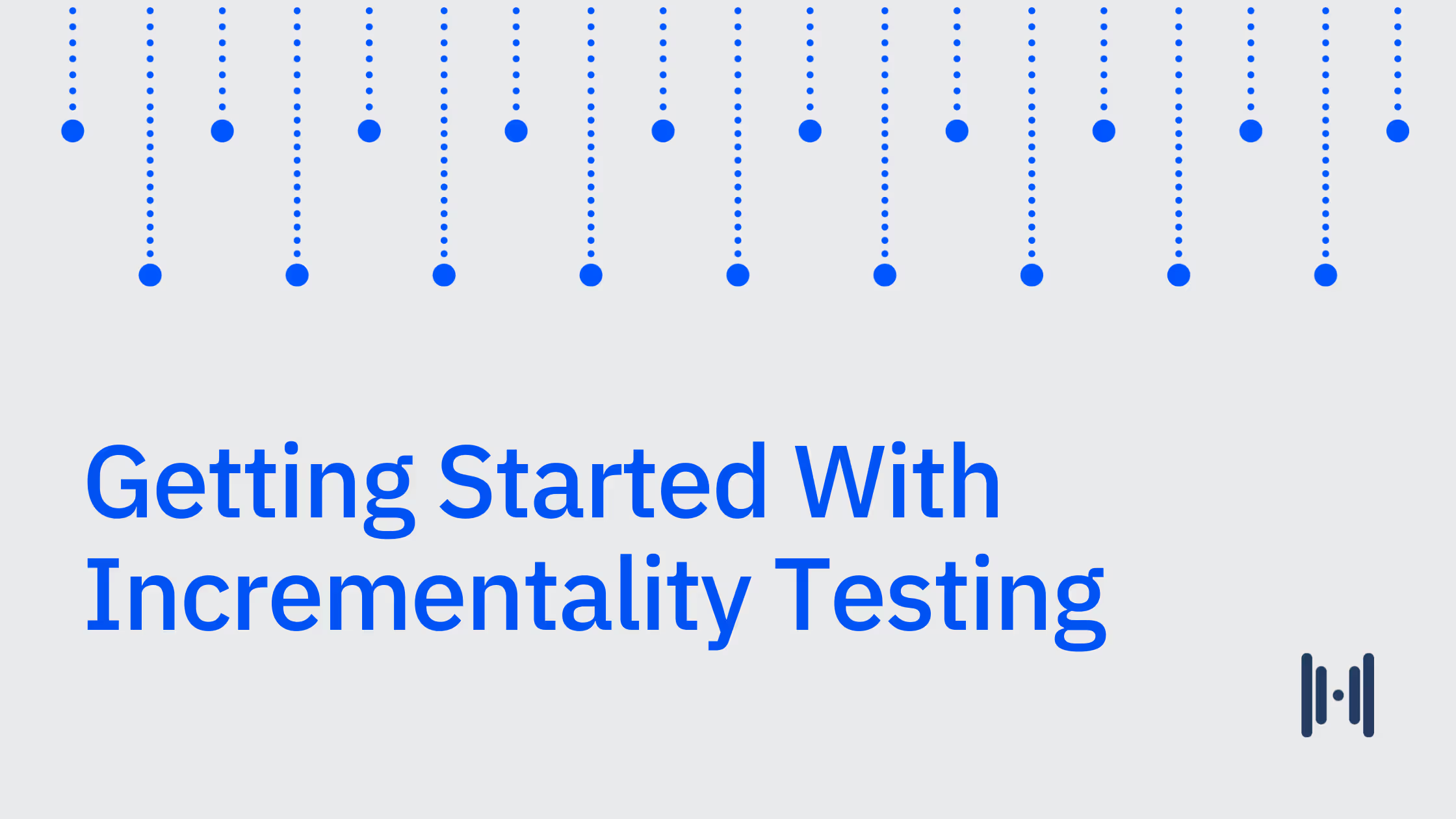
.avif)
.avif)
.avif)
.avif)
.avif)
.avif)




.png)
.avif)
.png)
.avif)




